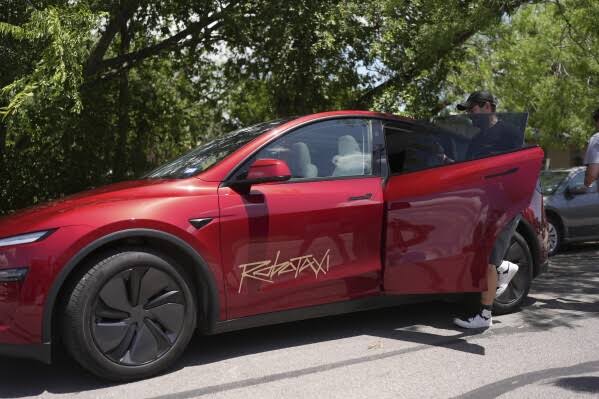Tesla made headlines once again as it launched its long-anticipated robotaxi service in Austin, Texas. The event marked a significant milestone in the company’s journey toward fully autonomous vehicles. However, just hours after the launch, a concerning video surfaced, showcasing a robotaxi making alarming navigational errors.
Launch of Tesla’s Robotaxi Service
Tesla’s robotaxi service has officially rolled out within certain geofenced areas of Austin, utilizing a fleet of 10 to 20 Model Y vehicles. Users can access these self-driving taxis through a specialized app, available daily from 6:00 AM to midnight. Although the service aims to enhance urban mobility, it introduces potential risks and challenges, as highlighted by the recent mishap.
To mitigate these risks, Tesla has implemented safety measures, including a human employee seated in the front passenger seat, equipped with emergency stop and pull-over commands accessible via an exclusive robotaxi interface. Additionally, each trip is monitored by a dedicated team of teleoperators, ready to intervene in case of emergencies, ensuring a somewhat controlled testing environment for the new technology.
The Incident That Has Everyone Talking
Amid the excitement surrounding the launch, a video clip recorded by podcaster Rob Maurer showcased a troubling scenario: during his ride, the robotaxi appeared to make repeated attempts to veer into oncoming traffic. The 12-second clip rapidly gained traction on social media, prompting discussions about the reliability of Tesla’s autonomous driving capabilities.
Oh nooooo
Uh oh this is gonna go viral 😭
🙈🙊 https://t.co/NMbVt2GAMt pic.twitter.com/YdrGBTJ6FM
— TexasTSLA (@TexasTSLA) June 23, 2025
This incident has led to heightened scrutiny, especially from those who doubt Tesla’s claims regarding its autonomy levels. Critics argue that while Tesla promotes its robotaxi service, it still lacks the fully unsupervised self-driving capabilities showcased by competitors like Waymo. Notably, Waymo operates a Level 4 autonomous vehicle fleet in several cities, including Phoenix and San Francisco, with an extensive array of sensors enabling a high level of safety and reliability.
The Competition: Waymo and the Quest for Autonomy
Google’s Waymo has established itself as a leader in the autonomous vehicle sector, utilizing a fleet of approximately 1,500 Jaguar I-Pace vehicles equipped with advanced technology including LiDAR, 360-degree cameras, and radar systems. These technologies allow Waymo to navigate complex urban environments safely and efficiently, setting a benchmark that Tesla is yet to achieve.
In contrast, Tesla relies heavily on its proprietary neural networks and camera-based systems, which it claims can process visual information with precision, even under challenging conditions such as direct sunlight or fog. According to statements from Tesla, their upcoming AI5 hardware, expected to launch later in 2025, aims to enhance the car’s autonomy and safety features significantly. This progression could play a pivotal role in determining the success of their robotaxi service.
Market Reaction and Future Implications
The tumultuous launch and ensuing incident have created mixed reactions among consumers and industry experts. Some enthusiasts hail Tesla’s innovative spirit and commitment to advancement, while skeptics voice concerns over safety and regulatory compliance. As the automaker continues to expand its robotaxi service, it will face increasing pressure to demonstrate that its technology can operate safely without human intervention.
The challenges ahead are substantial. Tesla must not only improve its vehicle algorithms and hardware but also address public safety fears. According to a recent article from Reuters, public perception of autonomous vehicles will play a crucial role in shaping market acceptance and adoption rates. Tesla’s ability to prove its system’s reliability and safety can significantly influence its standing in the competitive landscape against established players like Waymo and others.
Quick Reference Table
| Feature | Tesla Robotaxi | Waymo |
|---|---|---|
| Service Regions | Austin, TX | Phoenix, Los Angeles, San Francisco, Austin |
| Vehicle Type | Model Y | Jaguar I-Pace |
| Autonomy Level | Level 2 | Level 4 |
| Sensor Technology | Cameras | LiDAR, cameras, radar |
| Human Oversight | Teleoperators | No |
| Launch Year | 2025 | 2018 |
As Tesla continues to innovate and face scrutiny, the future of its robotaxi service will depend on the company’s response to these challenges and its commitment to ensuring passenger safety.

